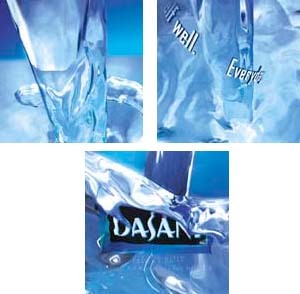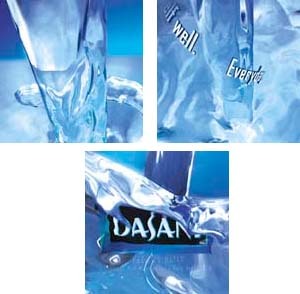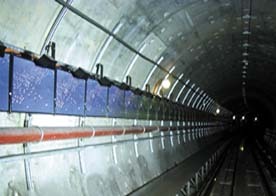Now you see it, now you don’t! I’m riding in a subway car, gazing out the window when, suddenly, like a hallucination, an animated advertising scene flashes outside my window. It’s not my imagination. Outdoor advertising has found a new print direction — subway in-tunnel advertising.
The new medium is championed by several advertising firms, particularly Manhattan-based outdoor advertising firm Submedia and Winnipeg, Manitoba-based Sidetrack Technology.
A low-tech approach to subway displays in subway tunnels, in-tunnel advertising relies on a scientific phenomenon known as "persistence of vision," which allows humans to see animated or moving pictures. In this process, a continuous strip of slightly varying pictures is transferred to a film strip. When the film is projected, the mind records each image as a continuous movement.
The concept of in-tunnel advertising was inspired by a zoetrope. Approximately two-and-a-half years ago, Submedia’s founder, Joshua Spodek, reminisced about the early 19th-Century optical toy that spun a picture strip inside a circular frame.
As Spodek played with one, he wondered if the animation process could be reversed, with people moving past static images arranged in a straight line, rather than images flying past immobile viewers. Spodek said, "I wondered, where could you do this? And I thought, subways!"
In Submedia’s subway-tunnel advertising system, film is replaced by a continuous series of light-box displays, each holding a slightly different image. Instead of sitting in a theater or at home watching images projected on a screen, subway passengers move past display boxes and see a brief commercial.
The beauty of this system lies in its simplicity — no electronics, flashing lights, sensors or moving parts, except for the passing train. Spodek observed, "It’s a natural environment for our kind of advertising, because you have a captive audience of thousands of passengers who are looking for something to do. Our light boxes captivate their attention. And the really good part is that there are more city-transit riders each year."
Each display unit comprises a 3 x 3-ft., backlit lightbox, a fluorescent light source and ballasts. Because the boxes are placed in the subway at window height, an advertisement of 15-30 seconds requires approximately 200 display boxes placed side by side between two subway stations.
Speeds above 5 mph generate a moving image. At approximately 35 mph, the frame rate (averaging 200-300 frames per second) produces a high-resolution display that’s approx- imately 10 times sharper than television. Although the installation of a single display system within a subway tunnel averages approximately nine days, a change-out from one ad campaign to another takes slightly under two hours.
Under-standing the process
The Submedia business model resembles that of above-ground billboard advertising companies, which enumerate sign placements and viewers. Submedia fabricates and installs (at no cost to the host city) the display boxes and advertising placements. The company earns its revenue from advertising charges and shares that with the host transit authority.
Digital printing, display fabrication and in-tunnel installation are subcontracted to local businesses on a bid process. Submedia currently specifies Kodak Duratrans as the display printing material.
Submedia’s first in-tunnel advertising installation occurred in Autumn 2001, in Atlanta, working in collaboration with the Metropolitan Atlanta Rapid Transit Authority (MARTA). Submedia showcased Coca Cola’s branding campaign for the premiere of Dasani bottled water. The in-tunnel Dasani display comprised approximately 1,000 ft. of right-of-way that resulted in a 20-second advertisement for train passengers.
MARTA General Manager Nathan P. Ford Sr. stated, "Submedia’s new displays have the potential to place MARTA on the cutting edge of a new advertising technology."
Furthermore, Spodek says, "The beauty of in-tunnel advertising is that it’s not a replacement revenue, but a totally new revenue stream for subway transit authorities."
Spodek has ridden on MARTA subway cars to observe passenger reactions to Submedia displays. "It’s been overwhelmingly positive. When passsers-by first encounter a Submedia in-tunnel display, there’s usually a big gasp from the passengers, and many applaud. We’ve certainly created a buzz of anticipation with our displays and the MARTA commuting public."
Submedia’s second installation occurred in Philadelphia, where the Port Authority Transit Co. (PATCO) subway system advertised the same Dasani ad campaign. Spodek says his company is negotiating with transit authorities in New York City, Chicago, San Francisco, Boston and Washington, D.C. for other installation opportunities. Submedia believes the subway tunnel advertising marketplace could generate approximately $300 million in North America within the next five years.
Getting sidetracked?
Another in-tunnel advertising company, SideTrack Technologies, also showcases a unique subway, in-tunnel advertising process. Company founder Rob Walker’s inspiration arose while riding the Parisian subway system.
Looking out the window, he thought, "What a waste, they ought to put billboards on the walls. People are already staring out the windows. Why not give them something to look at? Our display system uses potential advertising space that was previously unused and presents a memorable way of advertising that captures the public’s attention."
Recalling children’s flipbooks, in which slightly different images on each page are flipped to impart movement, he investigated the potential of transferring the flipbook concept into a tunnel-advertising system.
Rather than using lightboxes, Walker’s company mounted an incandescent front light over a metal frame placed on a tunnel wall. The frame runs the length of the advertisement, enclosing several hundred digitally printed images (printed on 3M Scotchprint) running side by side for a 20-second promotion. "We prefer the use of our wall-mounted metal frames because we want our system to be as flexible as possible, as sometimes there’s not a lot of space in these tunnels."
The 1.8 x 2.2-ft. average frame size approximates that of a 35-in. television screen so that clients who have previously produced television commercials can easily transfer video frames from their commercials to a SideTrack display for immediate application. Walker said, "We chose our frame size to be similar to a television screen so that our clients’ initial adaptation to our display would be easier. This way they can use already existing film content in our displays."
SideTrack’s first installation was located in the Projek Usahasama Transit Ringan Automatik Sdn Bhd (PUTRA) subway tunnels of Kuala Lampur in Malaysia. SideTrack’s first customer, Tokyo-based Canon, a digital-imaging company, immediately accepted the opportunity when approached. Public viewing of SideTrack’s first display install is slated for Spring 2002.
Walker says he has already briefed transit authorities in Hong Kong, Singapore, New York City, San Francisco and Toronto. "They’re all extremely interested, but they’re very curious to see the first commercial system come online."
When enough trials are completed, and transit authorities worldwide become comfortable with in-tunnel advertising, the process will give new meaning to the "light at the end of the tunnel." Sign display media has found a new home.



 Tip Sheet1 week ago
Tip Sheet1 week ago
 Photo Gallery3 days ago
Photo Gallery3 days ago
 Ask Signs of the Times5 days ago
Ask Signs of the Times5 days ago
 Real Deal2 weeks ago
Real Deal2 weeks ago
 Benchmarks1 week ago
Benchmarks1 week ago
 Paula Fargo13 hours ago
Paula Fargo13 hours ago
 Photo Gallery14 hours ago
Photo Gallery14 hours ago
 Women in Signs2 weeks ago
Women in Signs2 weeks ago












